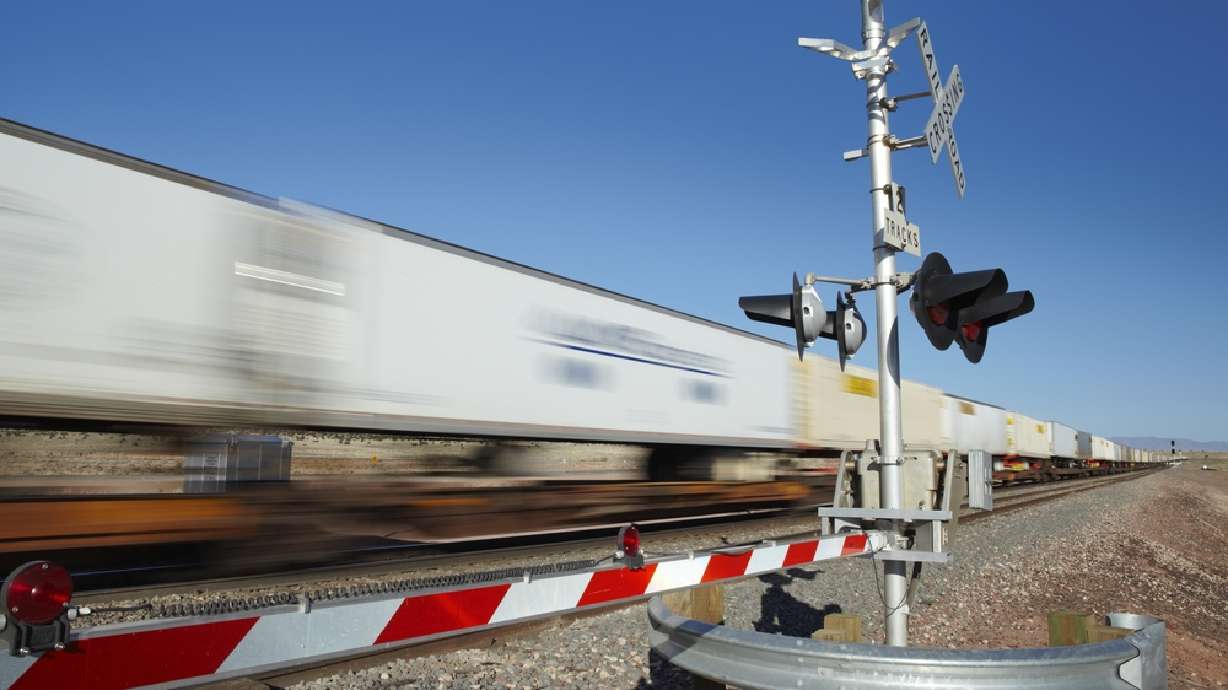Estimated read time: 3-4 minutes
This archived news story is available only for your personal, non-commercial use. Information in the story may be outdated or superseded by additional information. Reading or replaying the story in its archived form does not constitute a republication of the story.
When your car is full of people and you've got places to be, it's understandably frustrating when the lights start flashing at the railroad crossing and you have to wait for a passing train.
But here's a statistic that will stop you in your tracks: In the U.S., a person is hit by a train approximately every three hours, according to the National Highway Traffic Safety Administration.
These days, everyone is in a hurry. Busy schedules and distractions make it easy to forget simple safety precautions that could prevent tragic situations from happening. The problem is that many people either aren't aware of these guidelines — or they disregard them altogether.
Well, in honor of Rail Safety Week, the Utah Transit Authority and Operation Lifesaver have teamed up to share some train rail safety tips that might just save your life.
Here are seven things to help you remember to "Use Brains Near Trains."
Cross at designated crossings
It's vitally important that you only cross train tracks at designated pedestrian or roadway crossings. Make sure to obey all warning signs and signals, too!
Watch for a second train in both directions
Keep in mind that trains can move in either direction at any time. Sometimes locomotives push cars instead of pulling them, which is especially common in commuter and light rail passenger service.

Listen for trains before crossing
Distractions around railroad tracks can be deadly. Remove your headphones, refrain from texting and stay alert when you're crossing. Also, freight trains don't always travel at fixed times, so you should always expect a train at each highway-rail intersection at any time. Stop, look and listen!
Stop for flashing lights and gates
Even if you don't see or hear an approaching rain, never ever try to go around flashing lights or gates. Trains today are quieter than ever and are always moving faster than you think. Stay behind the white stop line or at least 15 feet away from the nearest rail.
Walk bikes, scooters and skateboards through crossings and stations
Here's a little-known fact about train tracks: They can be slippery! Because of that, it's always a good idea to dismount from your bike, scooter or skateboard before crossing. You also don't want to risk your wheels getting caught between the rails.
Keep off tracks even if you drop something
Walking on train tracks isn't only dangerous — it's illegal. All train tracks are private property. Never walk on tracks; it's illegal to trespass and highly dangerous. If you drop something while you're crossing, don't stop! Your safety is more important.
Remember that trains can't stop quickly
Never assume you can outrun or outdrive a train. It takes the average train traveling 55 mph more than a mile to come to a complete stop. That's the length of 18 football fields!
Safety starts with you
Luckily, staying safe around trains is easy. All it takes is a little patience and awareness. Follow the safety guidelines above and you should have nothing to worry about!
And if you want to take things one step further, you can take Operation Lifesaver's Rail Safety Pledge to demonstrate your commitment to keeping yourself and others safe around the tracks.
Always remember the saying: "Safety starts with me."
To learn more about train rail safety, visit oli.org.









